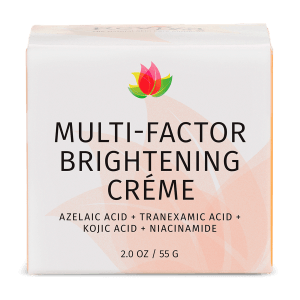Ingredients, Natural, Reviva Labs, Skin Care
Which Skincare Products Suit Skin with Melasma
Navigating the realm of skincare for those grappling with melasma requires precision, patience, and a deep understanding of the ingredients that can either soothe or exacerbate this condition. Melasma, characterized by dark, discolored patches on the skin, often requires a delicate balance of potent yet gentle products to manage its appearance effectively. This article aims to shed light on the types of skincare products that are most beneficial for individuals dealing with melasma, steering clear of specific brand comparisons, including Reviva Labs, to maintain a focus on ingredient efficacy and skin health.
Understanding Melasma
Melasma is more than just a surface-level skin issue; it’s a complex condition influenced by various factors, including hormonal changes, sun exposure, and genetics. It manifests as brown or gray-brown patches, primarily on the face. The cheeks, bridge of the nose, forehead, chin, and upper lip are areas commonly affected. Due to its link with estrogen and progesterone, melasma is more prevalent among women, especially during pregnancy, when it’s often referred to as the “mask of pregnancy or mother’s mask.” However, it can affect anyone, emphasizing the need for inclusive skincare solutions that address its unique challenges.
The Importance of Sun Protection
Sun exposure can significantly worsen melasma, making broad-spectrum sunscreens an essential component of daily skincare routines for affected individuals. UV rays exacerbate melasma’s appearance by stimulating melanocytes, the cells responsible for producing melanin. Thus, a high SPF sunscreen that offers protection against both UVA and UVB rays can be a critical tool in managing melasma. Physical sunscreens containing zinc oxide or titanium dioxide are particularly effective, as they sit on the skin’s surface and reflect sunlight away, offering a protective barrier without irritating sensitive skin or triggering melasma flare-ups.
Ingredients to Look For
When selecting skincare products for melasma-affected skin, it’s crucial to focus on ingredients known for their brightening and pigment-correcting properties. Ingredients like vitamin C, niacinamide, and kojic acid are revered for their ability to lighten hyperpigmentation without harsh side effects. Vitamin C, an antioxidant, not only helps in reducing melanin production but also enhances skin radiance and fights free radical damage. Niacinamide, or vitamin B3, improves skin elasticity, reduces inflammation, and lightens skin pigmentation. Kojic acid, derived from fungi, is another powerful agent for reducing melanin production and is often found in serums and creams formulated for brightening.
Reviva has several brightening products that help to improve the appearance of melasma. Our Dark Spot Brightening Serum, Kojic Acid Brightening Crème, and Multi-Factor Brightening Crème are all popular products.
Hydroquinone and Its Alternatives
Hydroquinone has long been considered the gold standard for treating hyperpigmentation issues like melasma. However, due to its potential side effects and restrictions in certain countries, many seek alternative ingredients that can offer comparable benefits without the risks. Alternatives such as azelaic acid, licorice extract, and arbutin have gained popularity. Azelaic acid not only targets melanin production but also boasts anti-inflammatory properties, making it suitable for sensitive skin. Licorice extract contains glabridin, which inhibits tyrosinase, an enzyme involved in melanin production, while arbutin, a naturally occurring compound found in bearberry plants, offers a gentler approach to brightening skin tone.
Peptides and Growth Factors
Innovations in skincare have introduced peptides and growth factors as ingredients that can support skin health in melasma management. These components are known for their ability to repair and regenerate skin cells, improving overall skin texture and tone. Peptides, short chains of amino acids, serve as building blocks for proteins such as collagen and elastin, promoting skin firmness and elasticity. Growth factors, on the other hand, play a crucial role in cell growth and repair, potentially enhancing the skin’s resilience and appearance. Products containing these ingredients can complement a melasma-focused skincare regimen by improving skin barrier function and minimizing the appearance of discoloration over time.
Exfoliation with Caution
Exfoliation can be beneficial for melasma-affected skin by promoting cell turnover and removing dead skin cells, leading to a brighter complexion. However, it’s important to approach exfoliation with caution, as overly aggressive methods can irritate the skin and worsen melasma. Gentle chemical exfoliants, such as lactic acid and mandelic acid, are preferred over physical exfoliants for their ability to evenly remove dead skin cells without causing undue stress to the skin. Incorporating these into your skincare routine a few times a week can help improve skin texture and reduce the visibility of hyperpigmentation.
The Role of Dermatological Treatments
While over-the-counter products play a crucial role in managing melasma, dermatological treatments can offer additional benefits. Procedures such as chemical peels, laser therapy, and microneedling are often used in conjunction with topical treatments to enhance results. Chemical peels, for instance, use a solution applied to the skin to remove the top layers, encouraging new, more evenly pigmented skin to surface. Laser therapy targets melanin-containing cells to reduce pigmentation, while microneedling stimulates collagen production and can improve the efficacy of topical treatments by enhancing their penetration. These treatments should be considered under the guidance of a dermatologist, especially for individuals with melasma, as the risk of skin irritation and potential worsening of pigmentation exists. A tailored approach, taking into account the individual’s skin type, severity of melasma, and overall skin health, is essential for achieving the best outcomes.
The Significance of a Holistic Approach
Addressing melasma effectively goes beyond topical treatments and dermatological procedures. Lifestyle factors such as diet, stress management, and overall health have a significant impact on skin condition. A diet rich in antioxidants, for example, can support skin health from the inside out, contributing to a reduction in inflammation and improved skin resilience against environmental stressors. Similarly, managing stress through practices like yoga, meditation, or regular physical activity can have positive effects on hormonal balance, which in turn can influence melasma. Ensuring adequate hydration and sleep are additional pillars of a holistic approach to managing this condition, underscoring the importance of a comprehensive lifestyle strategy.
The Importance of Patience and Consistency
Managing melasma is a long-term commitment that requires patience and consistency. The condition often responds slowly to treatment, and improvements may be gradual. It’s important for individuals to set realistic expectations and remain consistent with their skincare regimen, even when progress seems slow. Regular consultations with a dermatologist can provide guidance and adjustments to the treatment plan as needed. Persistence, along with a careful selection of skincare products and a commitment to sun protection, can lead to significant improvements over time.
Navigating Product Selection
When selecting skincare products for melasma, it’s crucial to read labels carefully and choose products free from ingredients that could potentially irritate the skin or exacerbate pigmentation issues. Products labeled as “non-comedogenic,” “hypoallergenic,” or “for sensitive skin” can be good indicators of their suitability. Additionally, seeking out products specifically formulated for hyperpigmentation or sensitive skin can further tailor the skincare regimen to meet the needs of those with melasma.
Final Thoughts
Melasma, with its complex causes and varied responses to treatment, requires a nuanced approach to skincare. The selection of products rich in skin-brightening and reparative ingredients, combined with a dedication to sun protection and a holistic lifestyle, forms the foundation of effective management strategies. While challenges in treating melasma persist, advances in skincare formulations and treatments offer hope and potential paths to improved skin health and appearance. Ultimately, understanding the condition, knowing what ingredients to look for, and maintaining a consistent, patient approach can empower individuals to manage melasma with confidence and achieve long-lasting results.
A study published by the American Academy of Dermatology highlights the prevalence and impact of melasma, noting that it affects approximately 6 million people in the United States, with women accounting for 90% of those affected (“Melasma: A Clinical and Epidemiological Review”). This statistic underscores the widespread nature of the condition and the importance of raising awareness and understanding about effective treatment options.
In navigating the journey to manage melasma, individuals are encouraged to seek professional advice, educate themselves about suitable skincare ingredients, and adopt lifestyle practices that support overall skin health. Through informed choices and dedicated care, it’s possible to mitigate the effects of melasma and embrace a confident, healthy complexion.









